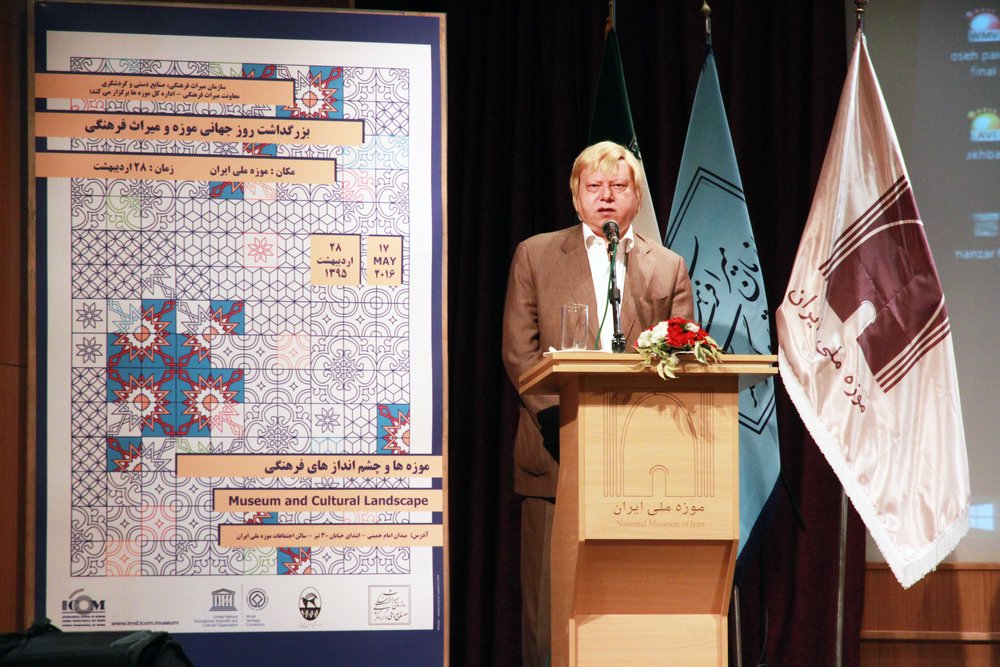Private sector outpaces government in running museums in Iran

The director of Iran’s Research Institute for Cultural Heritage and Tourism, Mohammad Beheshti, makes speech during a ceremony, which was held at the National Museum of Iran on May 17.
By Setareh Behroozi
TEHRAN – Privately-owned museums in Iran have been developed more than state-run museums during the past two years, the director of Iran’s Museums and Historical Properties Office, Mohammad Reza Kargar, announced.
About 40 museums were established by the private sector during this period, he said during a ceremony held at the National Museum of Iran on Tuesday.
The number of private museums increased by 50 percent in the previous Iranian calendar year (March 2015-March 2016) compared to its preceding year, he added.
“‘One Family, One Museum’ is our motto, which we hope the goal would be realized,” Kargar noted.
He also talked about an increase in the number of people who visited museums during last Iranian calendar year.
“According to statistics, over 25 million visitors went to museums last year,” he said, adding that several antiquities, which had been kept at the treasure house of the National Museum of Iran, were rearranged by the experts.
“All these developments indicate that enthusiasm is more important than capital in preservation of cultural heritage and people should be aware of the value of their heritage themselves,” he concluded.
Officials put a high value on preservation of cultural heritage
“Preservation of cultural heritage and cultural identity is now considered as a value by Iranian officials,” Iran’s tourism chief Masoud Soltanifar said during the event.
“I considered this view as the main achievement of Iran’s Cultural Heritage, Tourism and Handicraft Organization during past two years,” he announced.
He noted that several museums were established and renovated by the organization during the past year.
He referred to the reopening of the Islamic Era Museum after nine years and establishment of Khorasan regional museum as achievements of the organization.
Exhibitions and exchanges between museums increased
The number of exhibitions showcasing antiquities increased during past two years, indicating close cooperation between Iranian and foreign museums, the deputy director of the Cultural Heritage, Tourism and Handicraft Organization Mohammad Hassan Talebian said.
“Holding such exhibitions leads to the exchange of different cultures and civilizations by people who live in different parts of the world,” he added.
“Nowadays, museums are focusing on visitors rather than artifacts and this is why that they can attract more people,” Talebian mentioned.
Cultural landscape is necessary to understand a civilization
“Without having a cultural landscape, no artifact can convey cultural messages to visitors,” the director of Iran’s Research Institute for Cultural Heritage and Tourism, Seyyed Mohammad Beheshti, said.
Artifacts, which are kept at the museums, are mirror to cultural identity of a country and without consideration of cultural landscape, they don’t have any value, he said.
The main aim of a museum is to remind people of what they had in the past, but without a cultural landscape, it turns into a place for forgotten things, he concluded.
The International Museum Day, which is celebrated annually on May 18, is held this year with the theme of Museums and Cultural Landscapes.
The National Museum of Iran will celebrate the International Museum Day and its centennial today during a ceremony will be attended by the president of the International Council of Museums, Hans-Martin Hinz.
